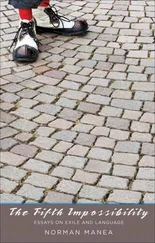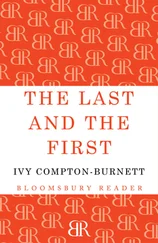In this context, Dr. Johnson had read an account of the Hebrides and had been much interested by learning “ that there was so near to him a land peopled by a race which was still as rude and simple as in the Middle Ages ” (EB 1939: 114). Thus, the wish developed in him to explore the state of a society which was utterly different to all he had ever seen and whose Gaelic language he was not familiar with:
At length, in August 1773, Johnson crossed the Highland line. and plunged courageously into what was then considered, by most Englishmen, as a dreary and perilous wilderness … [he wandered] about two months through the Celtic region … About the beginning of 1775 his Journey to the Hebrides was published, and was, during some weeks, the chief subject of conversation in all circles in which any attention was paid to literature. His prejudice against the Scots had at length become little more than a matter of jest; and whatever remained of the old feeling had been effectually removed by the kind and respectful hospitality with which he had been received in every part of Scotland (ibid.).
Dr. Johnson’s Scottish venture was even more popularized by the diary of his friend and travel companion James Boswell, in which he, among other Highland encounters, tells the story of how Dr. Johnson met the very same Flora Macdonald, who had helped Bonny Prince Charlie in his escape from the English soldiers, and even slept in the same bed:
Monday, 13th September [1773]. The room where we lay was a celebrated one. Dr. Johnson’s bed was the very bed in which the grandson of the unfortunate King James the Second lay, on one of the nights after the failure of his rash attempt in 1745-46, while he was eluding the pursuit of the emissaries of government, which had offered thirty thousand pounds as a reward for apprehending him.” (Boswell 1785: 130).
Dr. Johnson’s fame in posteriority was also grounded on a later publication, his Lives of the Poetsseries (published in 3 volumes between 1779 and 1781) which contains his most famous surviving quote:
Language is the dress of thought: and as the noblest mien, or most graceful action, would be degraded and obscured by a garb appropriated to the gross employments of rusticks or mechanicks; so the most heroick sentiments will lose their efficacy, and the most splendid ideas drop their magnificence, if they are conveyed by words used commonly upon low and trivial occasions, debased by vulgar mouths, and contaminated by inelegant applications. ( https://cowley.lib.virginia.edu/small/johnsoncowley.htmLast viewed 03/05/2021.)
Dr. Johnson’s metaphor, here applied to the writings of the English poet Abraham Cowley, has been the subject of a variety of essays and comments in either an agreeing or disapproving mode 3. It is, basically, a reflection of the connection between thinking and its linguistic expression and, at the surface, hard to contradict. When it comes to the analysis of higher order thinking skills (the so-called HOTS, cf. chapter 6.7), however, a couple of issues arise. If the kind of clothes you wear reflects in some ways what you are, your style of speech would indicate your thinking and, in Dr. Johnson’s own diction, spoil the quality of your most brilliant ideas and “ drop their magnificence ”.
The Lives of the Poets has been called the best of Dr. Johnson’s works: “ The narratives are as entertaining as any novel. The remarks on life and on human nature are eminently shrewd and profound ” (EB 1939: 115). But clothing seems to be more than “just having something on”, it is subject to fashion, sometimes hides more than it shows and it is also supposed to protect and support his or her bearer. When it comes to language “ as the dress of thought” texts and translations have to fit the context and need to express your ideas and intentions. On a lighter note, it could be said that language is not the dress but the costume of thought 4, disguising what people mean to say and, in this way, separating thoughts from the language supposed to express them. The famous philosopher Ludwig Wittgenstein, for instance, underwrote the possibility that language could deceive people and Noam Chomsky as a linguist underlines the creative and innovative character of language which leads him to his conclusion of language innateness and the nativist quality of his frequently cited Universal Grammar. Other writers have engaged in similar discussions, George Orwell pointed at the corruption of language and thought working in both ways, and Hans Christian Andersen described the admiration of missing garments in the “ Emperor’s New Clothes ” as a sign of subjugation and the fear of being left out by praising the stuff they do not see.
As much as the exact relation between language and thought might never be known, even the origins of language themselves are somewhat diffuse. Language in the widest sense of the word refers to any means of communication between living beings and in its developed form is decidedly a human characteristic, considered the distinctive mark of humanity:
On the ultimate origin of language speculation has been rife … Greek philosophers were divided into two groups on this question, some thinking that there is from the beginning a natural connection between sound and meaning and that, therefore, language originated from nature, while others denied that connection and held that everything in language was conventional. The same two opposite views are represented among the linguistic thinkers of the 19th century, the former in the nativism of W. v. Humboldt …, the latter in the empiricism of Whitney etc. (EB 1939: 702).
In this light, the assumptions about the origins of language, the connections between thought and its linguistic expression and the relationships between acquired native and learned foreign languages have remained open to discussion and provided a rich field for research and investigation in the language classroom.
2.1 The Research on Second Language Acquisition
Over the years and beyond bilingualism, linguistic research in the context of Second Language Acquisition (SLA) has yielded quite different if not controversial results. It seems to meander between the opposites of the Unitary System(USH) and the Dual System Hypothesis(DSH) and even goes back as far as the assumptions of learning psychologists ( Lernpsychologen ) like Carel van Parreren (1960). Van Parreren assumed a mental dual track system, where interferences occasioned distracting connections between the L1 and L2 “ track ” (like in the old-fashioned stereo tape recorders), and he considered the unitarian view as being harmful to the learning process. Over time, language teaching strategies went through a number of turns from behaviorism and the direct (Berlitz) method through to paradigmatic changes like immersion and generative SLA (see above: Noam Chomsky’s Universal Grammar and the Language Making Capacity—LMC), and the communicative, competence-oriented and intercultural approaches. All these changes have strongly influenced teaching strategies and more recently were complemented by social-constructivist ideas, relating to Vygotsky’s Zone of Proximal Development(ZPD; cf. Klewitz 2017a: 15) and to research results from cognitive neuro-science and experimental neurolinguistics. A comprehensive and integrative approach towards learning processes in general is presently gaining considerable influence as the concept of Visible Learningbased on the meta-analyses conducted by New Zealand’s educational researcher John Hattie.
One of the central issues remains, however, whether there are basic differences between acquiring your mother tongue (L1) and learning your second and/or foreign language (L2) and if so, how decisive these are. Apparently, L1 acquisition entails the parallel development of cultural and world knowledge and always happens successfully and effortlessly, if not automatically. Learning a foreign language, on the other hand, is perceived as being more difficult, can only be completed to a certain level, e.g. as described in the global scales of the CEF (see 4.2 and 7.2), and a nativelike competence is rarely, if at all, achieved. The language level arrived at depends, moreover, on vast individual differences, such as motivation, attitudes and types of learners and the respective contexts of societal expectations, school provisions and cultural environments. At the same type, there are certain parallels between L1 and L2 acquisition: similar mistakes occur in child- and adult-learning, for instance to-do-negations in English, syntax errors in German, fossilization in the development of the so-called interlanguage as a phase in the acquisition process that curbs learning progress or standstill as in the third-person-singular-“s” and other grammatical phenomena that deviate from the target language and seem difficult to “repair”. The answer to the question if learning L2 follows conscious (“ learning ”) or unconscious (“ acquisition ”) patterns 5depends on the learning theories operating in the background (cf. for details: Riemer 2010: 278 ff).
Читать дальше












